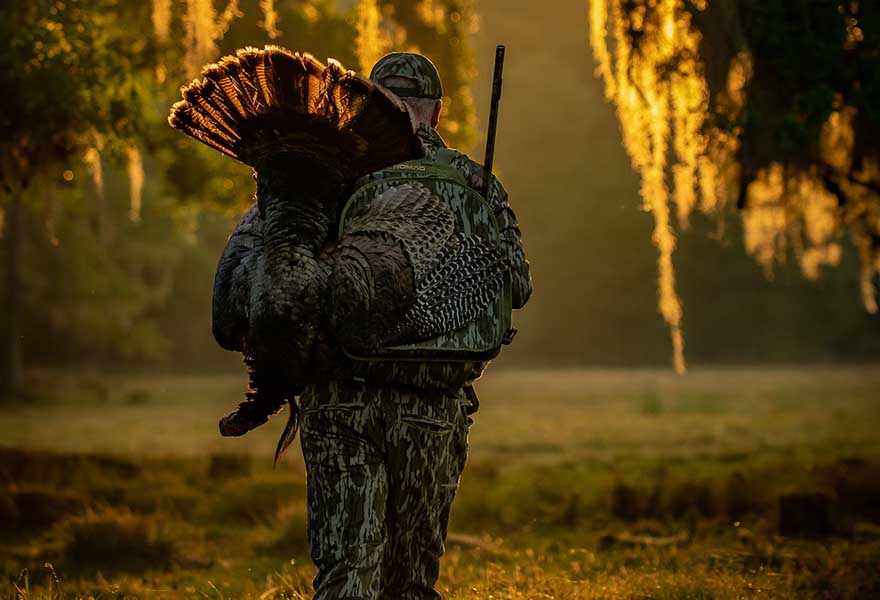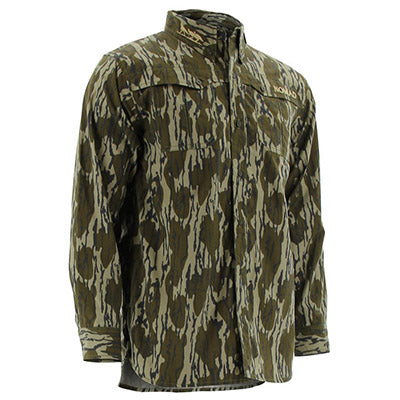A great decoy setup can mean the difference between a tom strutting right into your spread or warily hanging outside your shotgun range. Sure, turkeys aren’t the smartest creatures, but they have survival instincts. A shoddy spread can make them think twice about drawing closer and will mean the difference between bagging a tom and coming home empty-handed.
If you plan on heading out to bag some toms, here are some tips on setting up your decoys that can mean the difference between failure and success.
Realism Counts
Hyperrealism in decoys is very popular at the moment and for a good reason. Although turkeys aren’t known for their mental capacities, they can be discerning when checking out whether a decoy is a fake or a real bird.
As part of your essential turkey hunting gear, you need to invest in quality decoys instead of foam cut-outs to bring home some trophies. Natural paint jobs are a must, but so is effective posturing. Your prey will notice if the turkey they’re eyeballing doesn’t look quite right, and this will scare them off.
Know Your Turkeys
Toms and hens look different from one another, so it’s easy to tell them apart. Jakes–or immature toms–however, look a lot like hens. It’s crucial to know the details that mark a jake from a hen, especially if you’re hunting wild turkey. In some places, it is illegal to kill hens, so knowing the differences between male and female turkeys is vital.
Check the breast feathers of the bird. If it’s a male, the breast feathers are tipped with black. If it’s a female, the tips will be brown. Another way to tell is the length of the bird’s legs. From the base of the shank where it meets the body to the middle of the bird’s foot, a jake’s leg will be longer than a hen’s leg.
Timing Matters
The type of decoy spread you set up depends on the season and, specifically, the part of the season when you are hunting. At the beginning of spring turkey season up until May, you want to set up a spread that mimics a jake courting a hen. If you’re hunting in the fall, consider bunching your decoys up as they are less interested in one-on-one courtship at that time.
The most popular decoy setup at the moment is a jake in position over a compliant hen. This spread works well at the beginning of the season. After that, observe how the birds react to your decoys.
If you find them reticent to strut into range, set up a turkey decoy spread with all females. A mature tom will likely relish the idea of strutting into a circle of hens.
Shop Turkey Hunting GearAs the hunting season stretches into May, swap out your spread of hens for just a single one. With this spread, you may even entice an actual hen, which will be a massive draw for other turkeys.

Follow Suit
Although it may look like the flock of turkeys is wandering randomly and haphazardly, this is rarely the case. Most turkeys move together in the same general direction, although they may zig-zag away from the current course at times.
An excellent idea for your spread, if you’re using more than one decoy, is to face all the decoys in generally the same direction. Toms will take notice and wander through the flock if it looks like the birds are all in sync.
Keep Movement and Height in Mind
Finding the right decoy spread requires balance. Too much movement from the decoys and the toms will flee, sensing something is not quite right. Too little movement will produce the same result.
Set up a few sticks on either side of your decoy’s tail so that it will move a little, but the sticks will constrict its movement so that it won’t bounce around too much.
Another factor that can influence your hunt’s success is the height of your turkey decoys. Turkeys are observant. If a tom wanders into your spread and notes that the hen decoys are all taller than him, he will take off. Toms strut around hens every day for most of their lives. If a bunch of (fake) hens are suddenly all towering over him, he will be alarmed.
Finally, make sure you set up your turkey decoy spread so the decoys are standing up straight. Toms will see a lopsided or crooked hen and immediately know that it is not real.
Distance
Where you are waiting in relation to your decoy spread is also a key factor. For bowhunters, you should be around seven to 10 yards away from your decoys. If you’re using a shotgun, double that.
You should also be close enough that you could bag a tom that tentatively wanders into the outskirts of your spread, even if he doesn’t fully commit.
Turkey Moods
In the early spring, the mature toms are out and about looking to claim dominance over a specific area by fighting other toms. An aggressive decoy spread with large males works well in this period to lure in big birds who are itching for dominance.
A few weeks later, all the males are thinking about is breeding. Some smaller birds who have had some rough fights over the past few weeks can be lured into a spread with some jake decoys as they may think they can win an easy battle.
The other option is to set up a spread that has mainly one jake and a compliant hen. Older, more mature toms will see this setup and think that they can break the pair up and take the hen for themselves.
As the breeding season nears its end, turkeys will be concerned mainly with nesting. Using one female decoy and lots of calling will have the toms within range quickly.

Wrapping Up
If you plan on taking a bow or shotgun out into the woods this fall or spring to bag some toms, consider the timing, direction and height, among other factors, of your decoy spread. Paying attention to these details can mean the difference between a full bag and an empty one.
At Nomad, our mission is to outfit you with the best turkey hunting gear for all your outdoor hunting expeditions so that when the moment comes, you’ll be ready.



















